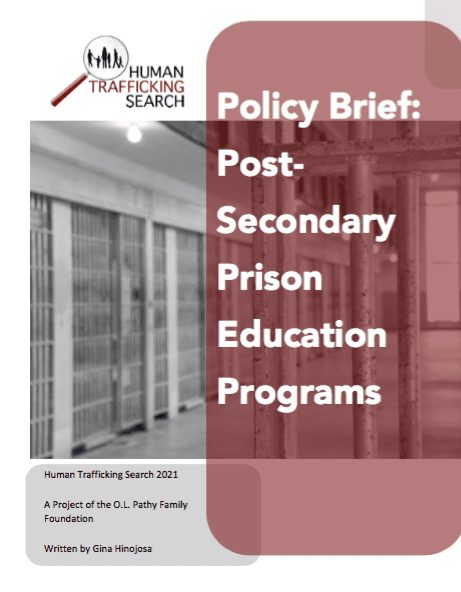
Prison Education Policy Brief
People with a criminal record face substantial barriers to fair employment both while in prison and after release. Given that the Thirteenth Amendment to the Constitution allows for forced labor as a punishment of crime, most people in custody are required to participate in prison work programs that often verge on enslavement. Most incarcerated people take away only pennies an hour for their labor and face reprisals like solitary confinement and other harsh punishments for refusing to work. In three states—Texas, Georgia, and Arkansas—incarcerated workers are paid nothing at all for their labor. In two others—Florida and Alabama—they are paid nothing for work that keeps the prison running.
Proponents of prison work programs argue that they provide an avenue for incarcerated individuals to use their time productively and develop work skills useful for reentry into the community. While research does show that many people in custody have unstable work histories and could therefore benefit from employment opportunities while incarcerated, research has shown that traditional prison work programs have little effect on post-release outcomes. The vast majority of prisoners—around 74 percent—are tasked with institutional maintenance jobs, like laundering uniforms and bed linens, mowing lawns, and staffing kitchens—tasks that typically do not foster transferable skills useful for the job market on the outside.
This lack of workforce preparation, along with the stigmas and discrimination that people with a criminal record face in the labor market, helps to explain why the over 600,000 people that transition from prisons back into their communities each year struggle to find employment. The unemployment rate among formerly incarcerated individuals sits at a staggering 27 percent—higher than the total U.S. unemployment rate during any historical period, including the Great Depression. Only 55 percent of those previously incarcerated make any income in the first year after their release. Those who do land jobs often earn incomes that put them well below the poverty line: median annual earnings in the first year after release hover around $10,000, while only 20 percent of previously incarcerated people earn more than $15,000. Even five years post-release, 67 percent of the formerly incarcerated remain either unemployed or underemployed.
Read more here.
